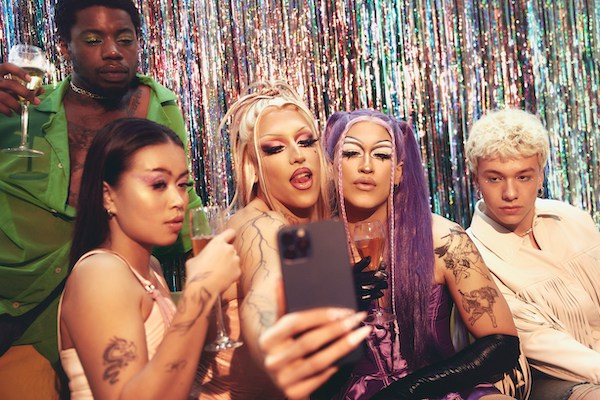
For years, the LGBTQ+ community has carved out a collection of safe havens in the form of gayborhoods, or gay villages. These areas, usually populated and frequented by members of the LGBTQ+ community, serve as places where we can be ourselves, watch out for one another and live freely among friends and lovers. These neighborhoods were once integral to fostering community among queer folks, but do we still need them in 2024?
Our history
The United States is dotted with historic gayborhoods, with some of the most popular including West Hollywood in Los Angeles, Dupont Circle in Washington, D.C., Provincetown in Massachusetts and Boystown in Chicago. Many, though not all, of these gayborhoods were born out of necessity: dangerous sociopolitical attitudes toward queer and trans folks made it safer for people to live in tight-knit communities. Ostracization, homophobia and transphobia often drove LGBTQ+ individuals to seek housing outside their city’s more popular neighborhoods. In fact, many gayborhoods and gay villages formed in lower income, higher crime areas that have become gentrified over time.
For example, Dupont Circle declined rapidly following the 1968 riots. Known locally as the D.C. riots, for four days, civil unrest engulfed the capital (and much of the country) after the assassination of Martin Luther King Jr.
However, the LGBTQ+ community moved into the area, triggering a slow revitalization. Lambda Rising opened in 1974, becoming one of the first gay bookstores in the country. Just a year later, the bookstore aired the first gay-focused television commercial in the United States. Fifty years later, Dupont Circle is a desirable area to live and explore, boasting art galleries, bistros, farmers markets, restaurants and yoga studios.
However, this gentrification comes with a cost. LGBTQ+ workers nationwide typically earn less than their cisgender and heterosexual counterparts, and as our gayborhoods become more attractive, the queer and trans folks who built up the area are often priced out. Without LGBTQ+ folks in the neighborhoods, there’s a risk of losing local queer businesses and culture, and thus, the title of gayborhood itself.
Varying necessity
In the last few decades, attitudes toward the LGBTQ+ community have shifted dramatically. Media representation, social normalization and legal protections for queer and trans folks lower the risk of physical danger as we go about our daily lives. In larger, more metropolitan cities, it often isn’t necessary to live in close proximity to other LGBTQ+ folks to stay safe.
Yet gayborhoods provide more than housing and spaces to party. They also provide crucial resources. Doctors, dentists, therapists, librarians and politicians that serve gayborhoods are typically well-versed in LGBTQ+ issues and specific needs. We can go to service providers in these areas and assume a base level of acceptance and understanding. We can get the care and aid we need rather than spending our appointments explaining the basics of who we are. Because of this, the risk of losing any gayborhood to gentrification is still felt deeply by the LGBTQ+ community in the area.
In smaller towns and more conservative states, gayborhoods often still offer some form of safety. For example, Eureka Springs, Arkansas, serves as a safe oasis in the center of a hostile political landscape. In the Bible Belt, homophobia and transphobia continue to pose a real threat.
Still, there are others without access to any gayborhood. For these folks, a single gay bar may be the extent of their public community gathering places. This was my own truth for the six years that I lived in rural Virginia. Being out openly or opening LGBTQ+-focused businesses can be next to impossible for queer and trans folks living in ultra-conservative locations.
Moving forward
As gayborhoods offer different levels of support to their communities, they are a crucial aspect of life for many. Gayborhoods impact our quality of life and freedom to fully embrace who we are.
In order for them to remain, they need intentional and concrete plans to celebrate and include the very people they were built to protect. In Philadelphia’s The Gayborhood, a number of community organizations work to facilitate connection between LGBTQ+ members, ensure LGBTQ+ folks have access to healthcare, and retain the history behind the neighborhood.
Until LGBTQ+ folks across the country have full rights and legal protections, there will always be a need for safe spaces for our community members to turn to. While some of the gayborhoods we have today may shrink or even disappear, others are bound to develop. They are the ultimate sign of our community’s dedication to survival, resilience, and freedom.


